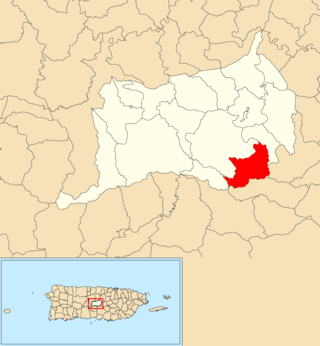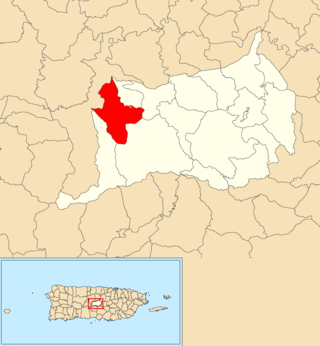
Cagüitas is a barrio in the municipality of Aguas Buenas, Puerto Rico. Its population in 2010 was 2,664.

Marías is a barrio in the municipality of Añasco, Puerto Rico. Its population in 2010 was 4,658.

Quebrada Arriba is a barrio in the municipality of Patillas, Puerto Rico. Its population in 2010 was 711.

Cruces is a barrio in the municipality of Rincón, Puerto Rico. Its population in 2010 was 1,455.</ref>

Jácanas is a barrio in the municipality of Yabucoa, Puerto Rico. Its population in 2010 was 3,246.

Hato Puerco is a barrio in the municipality of Villalba, Puerto Rico. Its population in 2010 was 7,728.

Caracol is a barrio in the municipality of Añasco, Puerto Rico. Its population in 2010 was 1,869.

Aguacate is a barrio in the municipality of Yabucoa, Puerto Rico. Its population in 2010 was 2,828.

Lomas is a barrio in the municipality of Canóvanas, Puerto Rico. Its population in 2010 was 5,336.

Río Grande is a barrio in the municipality of Aguada, Puerto Rico. Its population in 2010 was 1,152.

Salto is a barrio in the municipality of Cidra, Puerto Rico. Its population in 2010 was 176.

Domingo Ruíz is a barrio in the municipality of Arecibo, Puerto Rico. Its population in 2010 was 3,153.

Bauta Abajo is a barrio in the municipality of Orocovis, Puerto Rico. Its population in 2010 was 1,516.

Bermejales is a barrio in the municipality of Orocovis, Puerto Rico. Its population in 2010 was 500.

Botijas is a barrio in the municipality of Orocovis, Puerto Rico. Its population in 2010 was 3,720.

Orocovis is a barrio in the municipality of Orocovis, Puerto Rico. Its population in 2010 was 3,658.

Saltos is a barrio in the municipality of Orocovis, Puerto Rico. Its population in 2010 was 3,238.

Ala de la Piedra is a barrio in the municipality of Orocovis, Puerto Rico. Its population in 2010 was 419.

Bauta Arriba is a barrio in the municipality of Orocovis, Puerto Rico. Its population in 2010 was 913.

Cacaos is a barrio in the municipality of Orocovis, Puerto Rico. Its population in 2010 was 878.
























